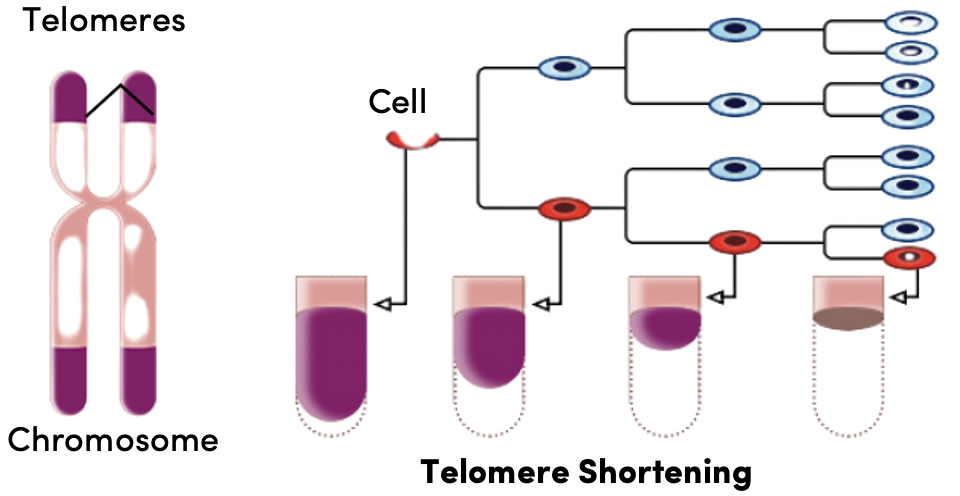Each new discovery in aging biology generates a lot of excitement. Newly discovered mechanisms are sometimes enthusiastically promoted as dramatic breakthroughs that will transform the field and lead to powerful clinical therapies. Over time, our understanding of these new elements in the aging process deepens, enthusiasm is tempered by reality, and these discoveries take a more proportional place in our overall picture of the complex mechanisms of aging. However, the early excitement generated by new discoveries is often amplified in the popular media or even turned into products purported to extend life. One example of this phenomenon is the discovery of telomere shortening.
Telomeres are repetitive non-coding base sequences at the ends of chromosomes that allow for complete replication of the coding portion of the DNA. These shorten with each replication event, and when telomeres become too short to protect the coding section of a chromosome, replication is impeded and cells become dysfunctional. Telomere shortening accompanies aging, and accelerated aging is associated with natural or induced telomere attrition.

Research has shown that telomeres shorten with age in dogs much more rapidly than in humans at a ratio roughly corresponding to the difference in average lifespan between the species. The length of telomeres also differs between breeds, and those breeds with longer telomeres tend to have longer lifespan than breeds with shorter telomeres.*

Interventions to protect and repair telomeres have extended lifespan in experimental animals. However, aging involves a lot more than just telomere attrition, and there is not yet any evidence that specific therapies can extend the lifespan of dogs by targeting their telomeres. Not surprisingly, this hasn’t stopped companies from selling product which are supposed to do just that. As exciting as the new discoveries in aging biology are, it is critical to stay focused on rigorous scientific testing of hypotheses and potential interventions to have the best chance of making real, meaningful improvements in the healthspan and lifespan of our canine companions.
*Fick, L. J., Fick, G. H., Li, Z., Cao, E., Bao, B., Heffelfinger, D., Parker, H. G., Ostrander, E. A., & Riabowol, K. (2012). Telomere Length Correlates with Life Span of Dog Breeds. Cell Reports, 2(6), 1530–1536.









